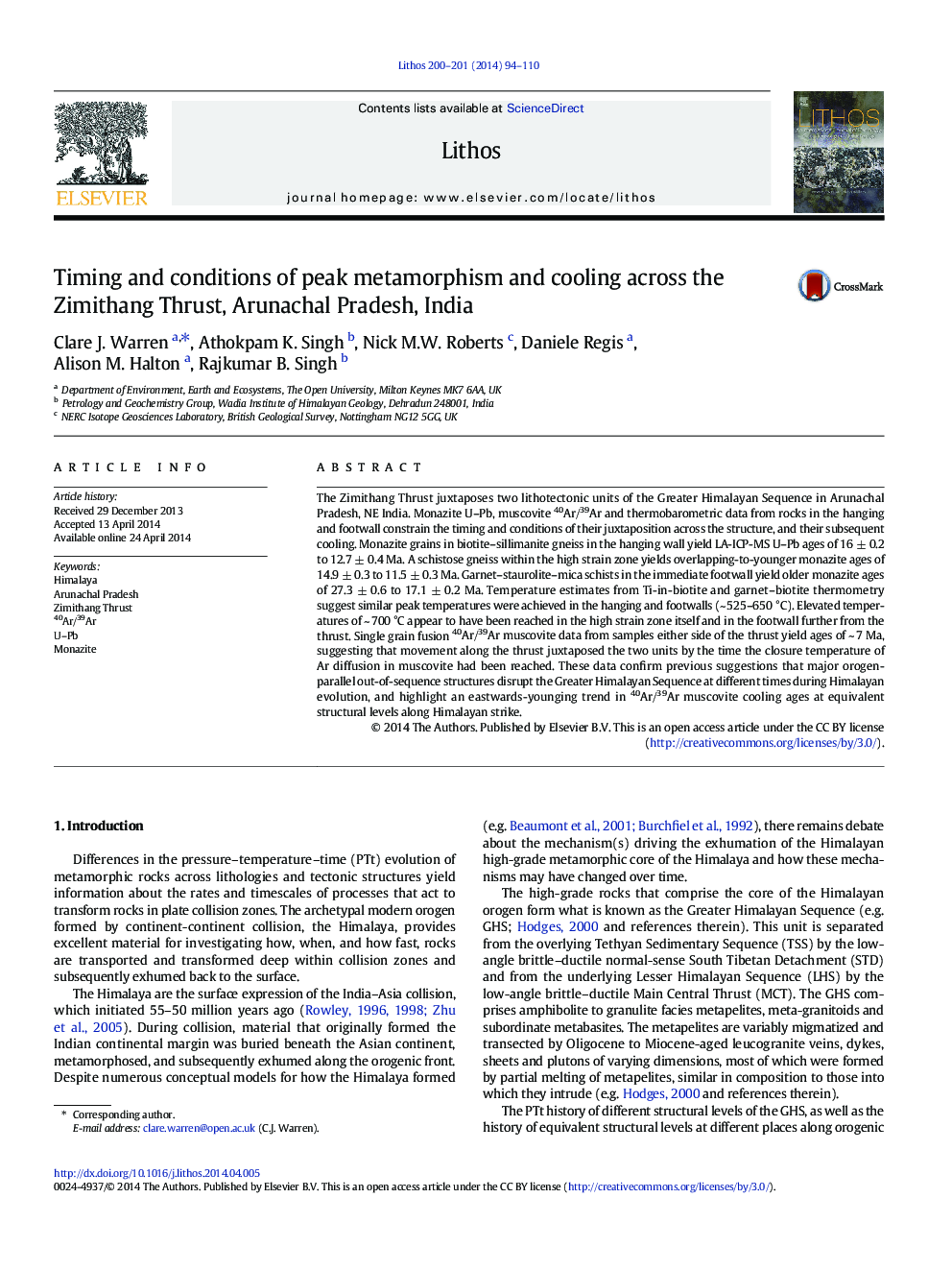| Article ID | Journal | Published Year | Pages | File Type |
|---|---|---|---|---|
| 6440795 | Lithos | 2014 | 17 Pages |
Abstract
The Zimithang Thrust juxtaposes two lithotectonic units of the Greater Himalayan Sequence in Arunachal Pradesh, NE India. Monazite U-Pb, muscovite 40Ar/39Ar and thermobarometric data from rocks in the hanging and footwall constrain the timing and conditions of their juxtaposition across the structure, and their subsequent cooling. Monazite grains in biotite-sillimanite gneiss in the hanging wall yield LA-ICP-MS U-Pb ages of 16 ± 0.2 to 12.7 ± 0.4 Ma. A schistose gneiss within the high strain zone yields overlapping-to-younger monazite ages of 14.9 ± 0.3 to 11.5 ± 0.3 Ma. Garnet-staurolite-mica schists in the immediate footwall yield older monazite ages of 27.3 ± 0.6 to 17.1 ± 0.2 Ma. Temperature estimates from Ti-in-biotite and garnet-biotite thermometry suggest similar peak temperatures were achieved in the hanging and footwalls (~ 525-650 °C). Elevated temperatures of ~ 700 °C appear to have been reached in the high strain zone itself and in the footwall further from the thrust. Single grain fusion 40Ar/39Ar muscovite data from samples either side of the thrust yield ages of ~ 7 Ma, suggesting that movement along the thrust juxtaposed the two units by the time the closure temperature of Ar diffusion in muscovite had been reached. These data confirm previous suggestions that major orogen-parallel out-of-sequence structures disrupt the Greater Himalayan Sequence at different times during Himalayan evolution, and highlight an eastwards-younging trend in 40Ar/39Ar muscovite cooling ages at equivalent structural levels along Himalayan strike.
Related Topics
Physical Sciences and Engineering
Earth and Planetary Sciences
Geochemistry and Petrology
Authors
Clare J. Warren, Athokpam K. Singh, Nick M.W. Roberts, Daniele Regis, Alison M. Halton, Rajkumar B. Singh,
